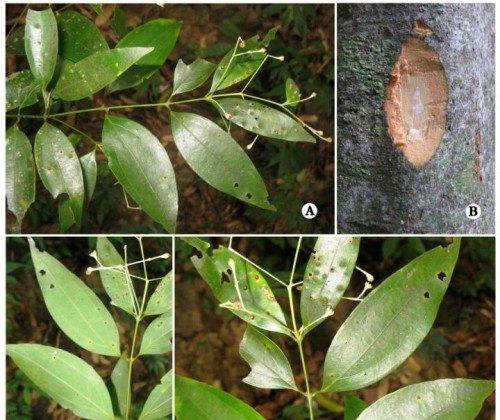A large number of tigers are inhabiting the forests outside protected areas in Maharashtra, finds a new survey. The study, conducted in the Nagzira-Tadoba corridor found 27 tigers in the area with some inhabiting areas outside the protected reserves. The researchers believe such kind of field analysis can give good guidance to which are the specific areas that need to be conserved for overall habitat protection of the tiger in India.
“India supports largest proportion of the global wild tiger population but has less than 7% of global tiger habitat, most of which is fragmented. Tigers once occupied over 90% of the Indian subcontinent, but within the last century their range has been estimated to have reduced by nearly 76%,” says the study conducted by Wildlife Trust of India (WTI) on ‘Assessing tiger distribution and the factors influencing tiger occupancy in Tadoba-Nagzira corridor 2014′.
Caught on Camera
The study conducted last year recorded the presence of 27 tigers in the Nagzira-Tadoba corridor, with most of the individuals concentrated in Brahmapuri division adjoining Tadoba-Andhari Tiger Reserve (TATR).
Camera traps set up in the Brahmapuri area captured cattle kills, watering holes and paths often taken by animals. 27 adult tigers and a few tiger cubs were identified and photographed at three different locations. Comparing previously collected data, it was found that the adult and sub-adult tigers photographed were the same cubs that had been recorded earlier. It was also observed that three tigers were moving between Brahmapuri and TATR buffer zone.
“This is not in conjunction with the theory that areas outside Tadoba are just sinks. It shows areas outside PAs were also supporting breeding tigers,” said executive director of WTI Rahul Kaul.
“The aim of this study was to generate baseline data on the distribution of tigers, the anthropogenic factors influencing tiger occupancy and habitat connectivity across one of the most important corridors in Tadoba-Nagzira,” said Kaul.
Choicest Homes
The study also found that as the distance from the protected area increased, the presence of tigers decreased. Tigers living or not living in a particular area affected by a number of factors like,
- Presence of large prey species (source of food),
- Disturbance (external features causing threats),
- The proportion of tiger habitat (fighting between the males in a region for domination)
- and Livestock.
Circuitscape, a program to predict patterns of movement, gene flow and genetic differentiation among plant and animal population in heterogeneous landscapes, showed that there were critical areas within the Tadoba-Nagzira region which could be restored and the corridor strengthened as a good tiger habitat. If planned and executed well, these areas could become not just regions where tiger movement is there, but prospective areas to support future tiger populations.
Planned Protection
The study emphasizes that in order to protect the remaining potential tiger habitats it is very important to have accurate knowledge of tiger occupancy inside and outside the protected areas. Monitoring the animal populations on a regular basis could help to set management objectives and to measure the effectiveness of the conservation programme. Making land surveys of large areas could help identify habitat, the nature of connectivity and the routes taken by the moving tigers.
Threats to Tiger Corridors
Recording the threats faced by existing tiger corridors the research team found the following,
* Depleting forests& degradation.
* Tree-felling for firewood: It was not just the large scale felling of trees, but also the collection of tree branches by local communities for fuel wood that was a big cause for the rapid loss of forest cover. Camera trap images showed that locals carry away substantial quantities of wood on bicycles on a daily basis.
* Bamboo extraction: Huge quantities of bamboo were being extracted to make bamboo-mats. These mats were then collected by dealers to make house-compounds. Though it is an alternative source of income for the locals, it wipes out the forest and hence habitat for tiger.
* Forest Fires: Man made fire caused a lot of destruction and wiped out undergrowth.
* Monoculture: Several reserve forests have been leased out to FDCM (Forest Development Corporation of Maharashtra). The areas actually meant for tigers was being used by FDCM. The team believes there is a need to give a new role to FDCM activities so that conservation efforts are not affected.
* Laying of Roads & Railway lines in forested areas.
* Building of dams & canals: Human (Uma) river; one of the tributaries of the Wainganga passes through TATR-Brahmapuri corridor. The surveyors felt, the river could in all likelihood wipe out tiger corridor. Gosikhurd dam has already cut the corridor.
* Hunting of prey: Killing hares, wild boars by humans in these forest areas was causing dual damage to tigers. It deprived the tiger of its food and put it in danger because of the snares and nets.
The research is an important eye-opener and brings into the forefront the core issues that are standing in the way of better protection of tigers. Before newer plans are made to safeguard the future of the species in India, it is such planned field studies that can give a better understanding of the problems and the solutions.
This story was originally written by Ramya Naresh, a contributing writer for indiasendangered.com. For the original story and more information, please click HERE.




Friends Read Free